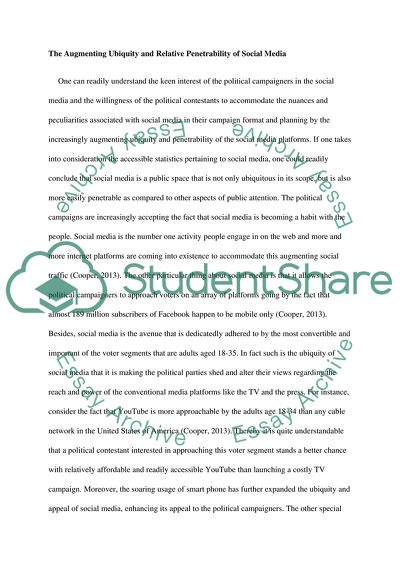Cite this document
(How Has Social Media Affected Political Campaigns Research Paper, n.d.)
How Has Social Media Affected Political Campaigns Research Paper. Retrieved from https://studentshare.org/social-science/1815066-how-has-social-media-changed-the-strategies-within-political-campaigns-to-improve-voter-turnout
How Has Social Media Affected Political Campaigns Research Paper. Retrieved from https://studentshare.org/social-science/1815066-how-has-social-media-changed-the-strategies-within-political-campaigns-to-improve-voter-turnout
(How Has Social Media Affected Political Campaigns Research Paper)
How Has Social Media Affected Political Campaigns Research Paper. https://studentshare.org/social-science/1815066-how-has-social-media-changed-the-strategies-within-political-campaigns-to-improve-voter-turnout.
How Has Social Media Affected Political Campaigns Research Paper. https://studentshare.org/social-science/1815066-how-has-social-media-changed-the-strategies-within-political-campaigns-to-improve-voter-turnout.
“How Has Social Media Affected Political Campaigns Research Paper”, n.d. https://studentshare.org/social-science/1815066-how-has-social-media-changed-the-strategies-within-political-campaigns-to-improve-voter-turnout.


